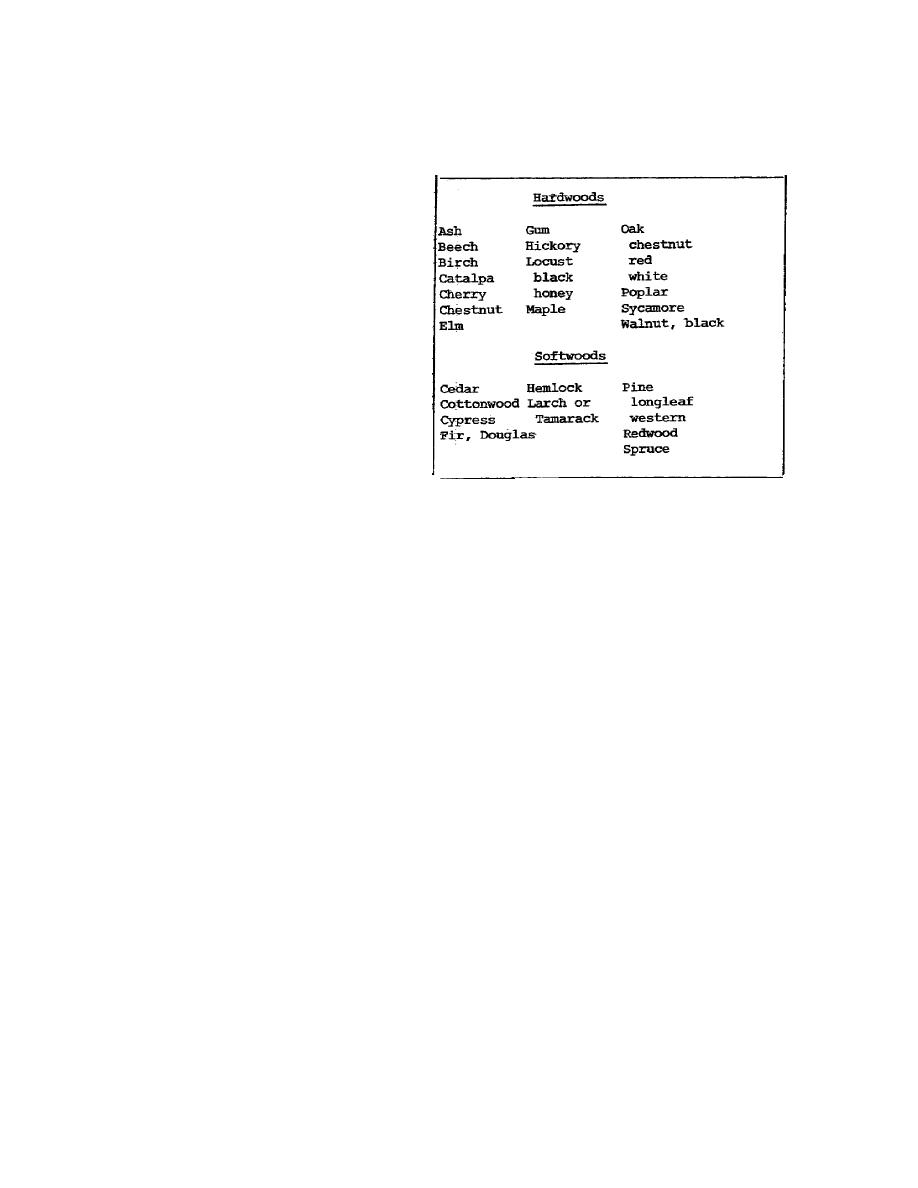
3.13.
WOODEN TIES
Many varieties of wood are used for ties.
Gone are the days when most railways
obtained the wood for their ties from the
forests beside their rights of way. Now,
with few lines able to do this, a wide
variety of woods are use, from ash to
black walnut among the hardwoods, from
cedar to spruce among the softwoods.
The four varieties most commonly used in
the United States are Douglas fir, red oak,
white oak, and longleaf pine. Besides the
kind of timber used, ties are further
designated by the part of the tree from
which they are make: heartwood from the
center of the tree and sapwood from near
the bark. In the box are listed the varieties
of wood used, grouped according to
hardwoods and softwood.
Regardless of the wood used, a tie should be free from large splits, numerous knots, and
obvious rot and decay. Its grain should be reasonably straight and true. A tie should be straight
but can be curved if a straight line across the top surface, joining the centers of the two ends,
does not leave the tie, as shown by the dotted lines in figure 3.3A. A tie is unsatisfactory if a
straight line across the side surfaces, joining the centers of the two ends, falls in an area less-than
2 inches from the-top or bottom of the tie, as shown by the dotted lines in figure 3.3B.
3.14.
OTHER KINDS OF TIES
In some places, crossties made of materials other than wood are used. However, it is
generally accepted that wood, because of its more desirable qualities, is the best crosstie material.
Its disadvantages; primarily economic, in some world areas have necessitated substitution of other
tie materials. Such substitution is
50



 Previous Page
Previous Page
